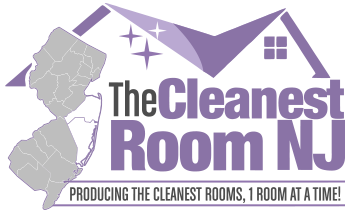Last spring, my neighbor Tom spent nearly $15,000 on new landscaping, exterior paint touch-ups, and decorative lighting to boost his home’s curb appeal before listing it. Meanwhile, I invested exactly $247 in a weekend pressure washer rental and transformed my equally tired-looking ranch home into what looked like a completely refreshed property. When both houses sold that summer, Tom’s went for just $8,000 more than mine—after his five-figure investment. The real estate agent later told me, “That pressure washing job made your listing photos pop. Buyers could actually see the home’s potential instead of just years of accumulated grime.”
After fifteen years of restoring homes across Ocean County, I’ve discovered that pressure washing delivers the highest visual impact for the lowest investment of any exterior improvement.

Let Us Powerwash Your House
That dingy, weathered look most homeowners attribute to “aging” is often just a superficial layer of dirt, algae, and environmental buildup that can be stripped away in hours, revealing the vibrant home hiding underneath.
The Psychology of First Impressions
We all intellectually understand that dirt isn’t permanent damage, yet our brains process visual information emotionally before logically. When potential buyers (or dinner guests) approach your home, they form impressions in seconds based primarily on exterior cleanliness and maintenance signals.
The transformation pressure washing creates isn’t just physical—it’s psychological. A thoroughly cleaned exterior creates a subconscious assumption that the entire property has been well-maintained. I’ve watched potential buyers walk through immaculately cleaned homes with greater confidence and less scrutiny simply because the pressure-washed exterior established a positive first impression that carried through their entire viewing experience.
The “New Again” Effect Everyone Misunderstands
Most homeowners have a fundamental misconception about their home’s surfaces. That greenish tint on your north-facing vinyl siding isn’t degradation—it’s living algae that thrives in dampness and shade. The black streaks on your asphalt shingles aren’t aging—they’re a fungus called Gloeocapsa magma that feeds on limestone filler in the shingles. The darkened concrete isn’t permanently stained—it’s hosting a party mix of pollen, dirt, mildew, and organic matter.
When you pressure wash these surfaces, you’re not just cleaning them—you’re essentially resetting them to a condition much closer to their original state. The transformation can be so dramatic that neighbors often ask if you’ve replaced rather than cleaned these elements.
Beyond Aesthetics: The Protective Power of Pressure
While the visual transformation gets all the attention, the protective benefits of regular pressure washing might actually be more valuable in the long run. Many of the organisms living on your home’s surfaces are actively damaging them.
The Destructive Houseguests You Can’t See
The algae darkening your roof doesn’t just look unsightly—it’s retaining moisture against your shingles, accelerating their breakdown and potentially reducing your roof’s lifespan by years. The mildew on your siding isn’t just cosmetic—it’s slightly acidic and gradually etching into painted surfaces. The grime embedded in your concrete isn’t harmless—it traps moisture and speeds up freeze-thaw damage in winter months.
Pressure washing doesn’t just remove these destructive elements—it resets the clock on this damage cycle. After restoring hundreds of home exteriors, I’ve seen consistent patterns: homes pressure washed every 1-2 years exhibit significantly less structural deterioration than similar-aged homes that go 5+ years between cleanings. The investment in regular pressure washing actually extends the lifespan of your most expensive exterior components.
The DIY Reality Check: When to Rent vs. Hire
The pressure washing equipment rental market has exploded with homeowner-friendly options, but this accessibility comes with risks. After seeing countless DIY disasters, I recommend a calculated approach to the rent-vs-hire decision.
The Surfaces That Forgive Mistakes
Concrete driveways and walkways are ideal DIY pressure washing projects. Their hard, non-porous nature can withstand higher pressure, and mistakes here are rarely permanent or expensive. Most moderately handy homeowners can successfully transform their concrete surfaces with rental equipment and basic instruction.
For my own home, I start each spring with a thorough concrete cleaning—the visual impact of removing winter’s accumulated grime from walkways and driveways creates an immediate curb appeal boost before tackling more sensitive surfaces.
The Surfaces That Demand Expertise
Roof cleaning should never be a DIY project. The risk combination is simply too high: personal safety hazards on sloped surfaces, potential roofing material damage from excessive pressure, and the specialized equipment and cleaners required for effective yet safe cleaning. The cost of professional roof cleaning is invariably cheaper than roofing repairs or replacements.
Siding requires a middle-ground approach. Vinyl siding can withstand moderate pressure but can be easily damaged by too-high pressure settings or improper technique. Wood siding and trim are even more vulnerable to pressure damage. For my own vinyl-sided home, I invested in professional cleaning every third year, handling light maintenance cleanings myself during interim years.
The Transformative Maintenance Schedule
After helping hundreds of homeowners develop exterior maintenance plans, I’ve found a specific pressure washing schedule that maximizes both curb appeal and protective benefits while minimizing costs:
- Spring concrete cleaning (annual DIY project)
- Full home exterior washing (professional service every 2-3 years)
- Roof cleaning (professional service every 3-5 years, depending on tree coverage)
For my own property, this balanced approach costs roughly $450-600 annually when averaged over time—a fraction of what many homeowners spend on purely decorative improvements with far less visual impact.
The most surprising feedback I receive from clients isn’t about their newly cleaned homes—it’s about how differently they feel about their property afterward. “I fall in love with my house again every time it’s pressure washed,” one client told me last summer. “For a few weeks, I actually look forward to pulling into my driveway.”
In an era of skyrocketing replacement costs, pressure washing offers something increasingly rare: a home improvement that delivers dramatic results without dramatic expense. The transformation isn’t just visual—it’s the satisfaction of revealing what was already there, hiding beneath years of accumulated neglect, waiting to shine again.
